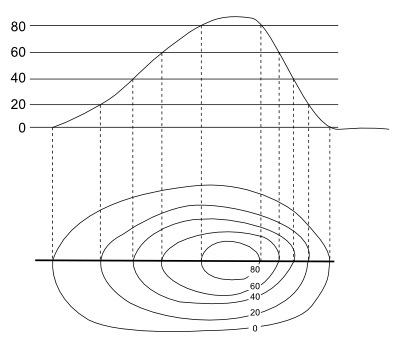Internal migration is when people move from one place to another within the same country. This happens when they look for a better life, such as jobs, schools or a safer life.
For example, when someone leaves the countryside and goes to live in a big city in search of work, this is a type of internal migration.
Causes of internal migration and how it occurs in Brazil
Internal migration in Brazil happens for several reasons. People move from one place to another within the country for reasons such as employment, education, searching for better living conditions or to escape difficult situations.
One of the main causes is the search for a job. Many people migrate to urban areas, such as large cities, in search of job opportunities.
This movement was especially notable in the decades from 1950 to 1980, when Brazil was going through a deepening industrialization process. The Northeast and Central-West regions were significant sources of migration to the urban areas of the Southeast, such as São Paulo.
Another cause is related to climatic and environmental conditions. Droughts, floods and other natural disasters can force people to leave their homes in search of safer places to live. This occurs mainly from the Northeast to other regions of Brazil.
Education is also an important reason for migration. Many students travel to attend quality universities and educational institutions in different parts of the country. Cities like São Paulo and Rio de Janeiro have attracted students from all over Brazil in search of higher education.
Conflict, violence and security issues can also motivate migration. For example, Rio de Janeiro faced problems of violence that led some people to seek safer areas to live.
Currently, we have so-called "return migrations". They occur mainly from the Southeast to the Northeast states, involving the descendants of past migrants.
If before the migration flow was from the Northeast to the Southeast, today it is the opposite, mainly due to the high cost of living, saturation of the job market and other social problems. In addition to this, the states in the Northeast have been experiencing accelerated growth, bringing new job opportunities.
Consequences of internal migrations
Among the positive aspects are urban development, cultural diversity and labor distribution. Migrations contribute to the growth of cities, enrich the country's culture and meet work needs in different regions.
On the other hand, they also generate urban inequalities, cause rural exodus and result in competition for resources in urban areas. This leads to social disparities, impacts agriculture and overloads city infrastructure.
Find out more at:
- Types of Migration
- Migration
- Migratory Movements in Brazil
- Geography lesson plan (8th grade) - Migrations
MARQUES, Vinícius. Internal Migration: what it is, causes and consequences.All Matter, [n.d.]. Available in: https://www.todamateria.com.br/migracao-interna-o-que-e-causas-e-consequencias/. Access at:
See too
- Migration
- Types of Migration
- Geography lesson plan (8th grade) - Migrations
- Migratory Movements in Brazil
- Six-Day War: causes, chronology and consequences
- Direct and indirect object exercises 7th grade (with answer sheet)
- Socrates
- Social Division of Labor



